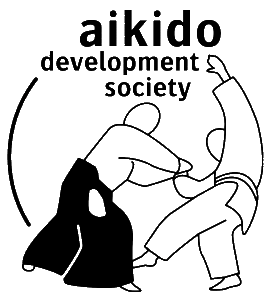Why do you offer a free taster lesson?
Aikido is very different from other martial arts and so we try to give newcomers a better idea of the techniques along with the style of our training and teaching. Some people decide that it is not for them or that they prefer a different style. This is perfectly understood and so there are no strings attached to taking a taster session.
What can I expect during a lesson?
A. Lessons always take the same form, we bow in and then exercise to warm up and stretch our muscles. We practice breakfalls followed by basic exercises aimed at improving posture and breakfalls as a continuation of the warm up.
The Sensei taking the lesson will then demonstrate a number of techniques which the class practice. Generally everyone practices with everyone else to learn to accommodate differences in the size and ability of your partner. Sometimes the lesson is split by ability in order to concentrate on specific aspects or advanced techniques.
We finish with cooling down exercises to help reduce strains and injuries.
Do I need to buy a suit straight away?
If you already have a judo style suit from another club that is probably fine. A t-shirt and tracksuit trousers are adequate for beginners and we only encourage members to buy a suit once they are happy that they wish to continue with the club.
Do you accept junior members?
We only accept students over the age of 18 due to our insurance and because we have not proceeded with the necessary regulatory clearances.
In general most Aikido clubs are small, in comparison to Karate or Judo, so historically demand has been low. Most clubs meet in the evenings so timings don’t generally work for younger students. Without a permanent dojo and almost full time instructors it is very hard to offer multiple sessions on one or more days a week.
There are clubs that do teach juniors and we encourage anyone looking for a club to make sure potential clubs have appropriate qualifications and welfare policies in place.
Can I buy a suit from the club?
We run the Society on a non-profit basis and so we do not sell clothing or equipment. The instructors are happy to suggest various retailers, share their experiences and make recommendations.
Do I need to be fit to practice Aikido?
Maintaining a good level of fitness is a good thing and will help in training and keeping up a good rate of practice on the mat. But Aikido is about using technique over strength, so stamina and endurance tend to be more important that physical strength. We generally encourage newcomers to do what they can, but there are no fitness tests.
What is the grading system?
Students start off as a white belt and their first grading usually comes about after 6 months of regular training. Then students progress through the grades as follows:
Yellow belt (5th Kyu), Orange belt (4th Kyu), Green belt (3rd Kyu), Blue belt (2nd Kyu), Brown belt (1st Kyu), Black belt (1st Dan)
Gradings tend to be further apart as students climb the ranks and each one is more challenging than the last, in the variety of techniques that are required.
Will you recognise a grade from another club?
We recognise and respect grades earned at other Aikido clubs and usually invite experienced students to wear their coloured belt on the mat.
Q. Why do you have so many Black Belts?
Many people will practice Aikido from their early twenties into retirement age. This means that students can practice with their club for decades. Naturally they progress through the ranks which means that clubs can seem top heavy with Dan grades. While this can seem intimidating to the beginner, they have the advantage of having a Black Belt as both a teacher and partner. This is not unique to our club and our experience is that it is the same with many others.
Q. Do you practice with weapons?
We train with a variety of weapons including tanto (knife), Bokken (sword) and Jo (staff). We use rubber or wooden weapons for safety and the emphasis is on learning to defend against attacks with weapons. At monthly weapons sessions we teach Kata for weapons-against-weapons as well as defending against attacks from weapons while unarmed.


